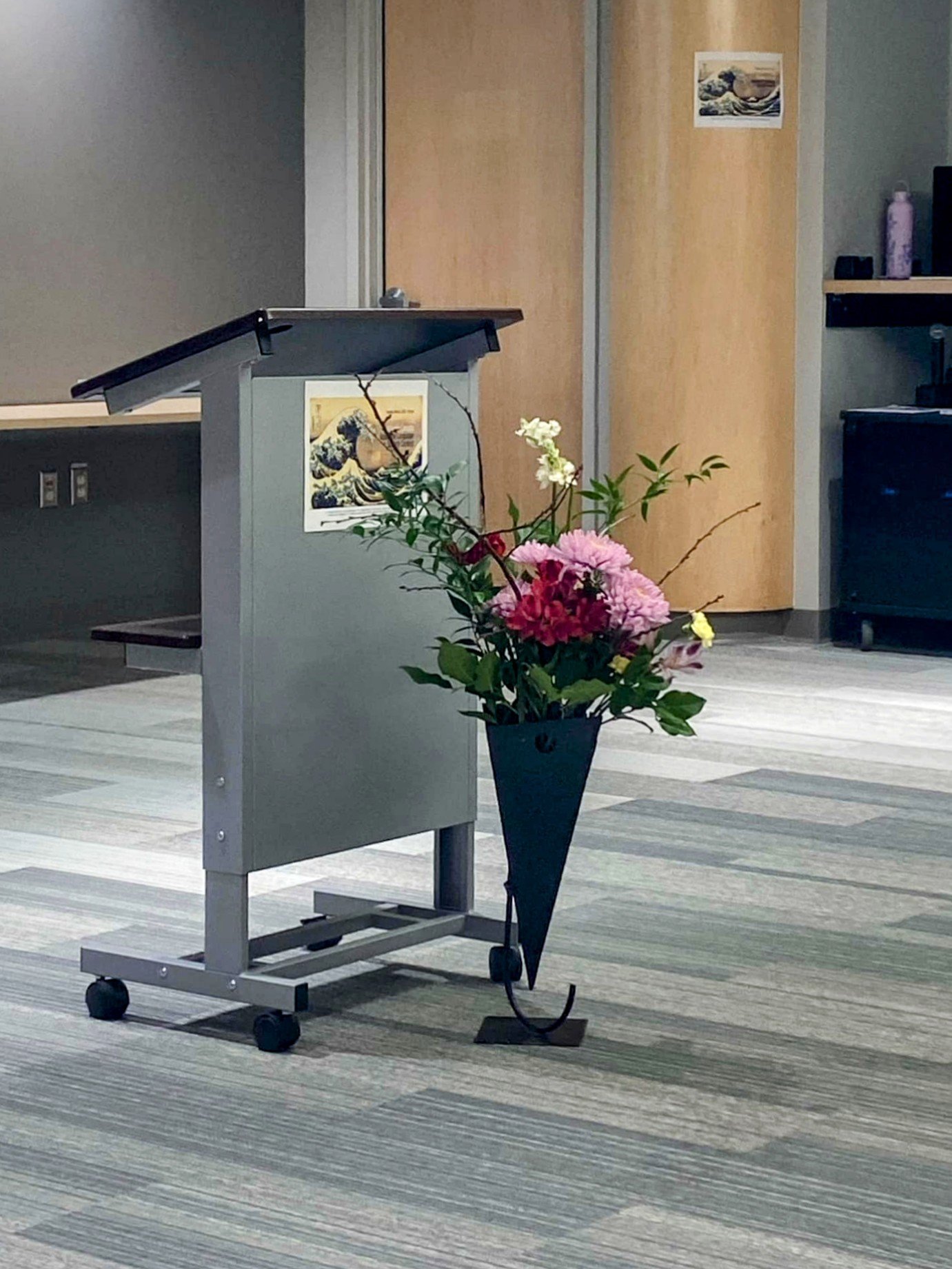When we did our exhibition at the LaHave Bookstore in the South Shore of Nova Scotia, we met pottery artist Vaughn Smith. His glazes of black, grey, blue, light blue, and foamy white certainly felt like they depicted the spectrum of colours inspired by the LaHave River.
As nageire vases were getting harder and harder to find in Japan, we asked him if he could make some for us and he kindly obliged. We even requested grooves around the mouth of the vases to help with the cross-bar fixtures. (See our online shop.)
Here is an arrangement with one of Vaughn’s nageire vases.
I hope you like it. —Miyako






















